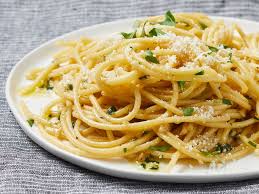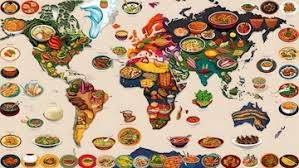Food has always been more than just sustenance; it is a representation of culture, history, and identity. Each dish tells a unique story, woven with the threads of tradition, innovation, and the influence of geography. Throughout history, dishes have traveled across continents, adapted to new cultures, and become beloved symbols of national pride. From the steaming hot bowl of ramen in Japan to the rich, aromatic biryani of India. Iconic dishes have embarked on global journeys, transforming and evolving along the way.
The Evolution of Italian Pizza: From Naples to the World

Few dishes are as globally recognized as Italian pizza. Originally from Naples, pizza was born out of necessity in the 18th century as a cheap, easy meal for the working class. In New York, the pizza became larger, with toppings like pepperoni and sausage gaining popularity. Over time, pizza spread across the globe, and today, it is a beloved food in almost every country, often customized to reflect local flavors whether it’s a spicy Indian curry pizza, a Japanese teriyaki pizza, or a Brazilian pizza with green peas and corn.
The Global Impact of Mexican Tacos: A Flavorful Migration

Mexican cuisine, with its bold and vibrant flavors, has made an indelible impact on global food culture. One of the most iconic Mexican dishes, the taco, has undergone a remarkable transformation as it traveled beyond its birthplace in Mexico. Traditionally made with soft corn tortillas filled with a variety of ingredients such as beef, pork, chicken, or fish, tacos have evolved into a versatile dish that has been embraced worldwide.
In the United States, particularly in the Southwest, tacos have become a staple of fast food culture, with hard shell versions, burritos, and taco salads making appearances on many restaurant menus. Around the world, tacos have been reinterpreted in numerous ways. In Korea, tacos are filled with bulgogi beef, while in the Philippines, the dish is often made with adobo flavored fillings. No matter the variation, tacos remain an emblem of Mexican cuisine, symbolizing the country’s rich cultural heritage while continuously adapting to new environments.
Sushi: Japan’s Culinary Export and Its Global Journey

Sushi, perhaps one of the most elegant and refined dishes in the world. Originated in Japan as a means of preserving fish by fermenting it with rice. Over time, sushi evolved into the modern dish we recognize today. With fresh, raw fish paired with vinegared rice, seaweed, and vegetables. However, it wasn’t until the 20th century that sushi began its global journey. Particularly after Japanese immigrants introduced the dish to the United States. The invention of the California roll, a sushi variant featuring avocado and crab, helped break down cultural barriers. Making sushi more accessible to a broader audience. Creative variations such as sushi burritos, sushi pizza, and vegan sushi catering to a diverse range of tastes. Sushi’s journey from a traditional Japanese delicacy to an international sensation showcases how food can transcend borders and adapt to new culinary landscapes.
Indian Biryani: A Spicy Journey from the Indian Subcontinent

Biryani, a fragrant rice dish layered with meat, vegetables, and aromatic spices, is a hallmark of Indian cuisine. Particularly in the regions of Hyderabad and Lucknow.
Over centuries, the dish spread across the Indian subcontinent and beyond. With each region adding its own unique twist. In Pakistan, biryani is known for its spicy, flavorful profile, while in Bangladesh. It is often cooked with fish or beef. The dish made its way to the Middle East, Southeast Asia, and Africa. With variations such as the Indonesian nasi goreng and the South African bunny chow incorporating elements of biryani. Today, biryani is not just a dish but a celebration of culture and history. With countless regional adaptations, each telling the story of the people and places that shaped it.
The French Influence of Croissants: A Delicate Journey Across Borders

Few dishes evoke the elegance and refinement of French cuisine like the croissant. Though its origins can be traced back to Austria. Where the kipferl (a crescent shaped pastry) was first made. It was in France that the croissant found its true identity. The pastry became a staple of French breakfast tables in the 19th century and quickly gained popularity across Europe and beyond.
As French culinary techniques spread around the world. So did the croissant, adapting to local tastes and becoming a symbol of sophistication in countries such as the United States, Canada, and Australia. Today, the croissant is found in bakeries worldwide. Sometimes filled with chocolate, almond paste, or even savory ingredients like ham and cheese. Making it a versatile treat that transcends its French roots. The croissant’s journey from Vienna to Paris and then around the globe highlights how a dish can evolve through cultural exchange and become a beloved classic wherever it lands.
The Italian Pasta: A Legacy of Tradition and Global Fusion

Pasta, one of the most enduring symbols of Italian cuisine, has an ancient history that spans centuries. It is believed that pasta was introduced to Italy by Arab traders in the 9th century. Who brought with them the technique of drying pasta to preserve it. Over the centuries, pasta became an integral part of Italian culture. With regional variations such as spaghetti, fettuccine, lasagna, and ravioli. As Italian immigrants traveled to the United States in the late 19th century, they brought pasta with them. Where it quickly became a staple of American cuisine. Whether served with a simple tomato sauce or as part of an elaborate seafood medley, pasta continues to be a dish that connects cultures and brings people together.
The Global Evolution of the Hamburger: From Germany to America and Beyond

The hamburger, often considered the quintessential American fast food, actually has its roots in Hamburg, Germany. Where ground beef was first used to create a minced meat patty. Immigrants brought the idea of the hamburger to the United States in the 19th century. Where it was adapted to suit local tastes and eventually became a cultural icon. Over the decades, the hamburger has evolved into a global phenomenon, with fast food chains spreading the dish to almost every corner of the world. From classic cheeseburgers in the United States to the teriyaki burgers in Japan and lamb burgers in the Middle East. The hamburger has embraced local ingredients and flavors, making it one of the most versatile and universally adored dishes.
A Journey of Flavor and Identity
The global journey of iconic dishes is a testament to the power of food to transcend cultural and geographical boundaries. Creating variations that reflect the fusion of traditions. Whether it’s the humble taco, the elegant sushi, or the iconic pizza, these dishes have become symbols of global connection. Bringing people together through shared meals and experiences. Food, in its many forms, tells the story of human history, culture, and the enduring ability to adapt and innovate. As we continue to explore the world of cuisine, we realize that the journey of each dish is far from over it’s an ongoing adventure. Filled with new flavors, stories, and connections waiting to be discovered.
